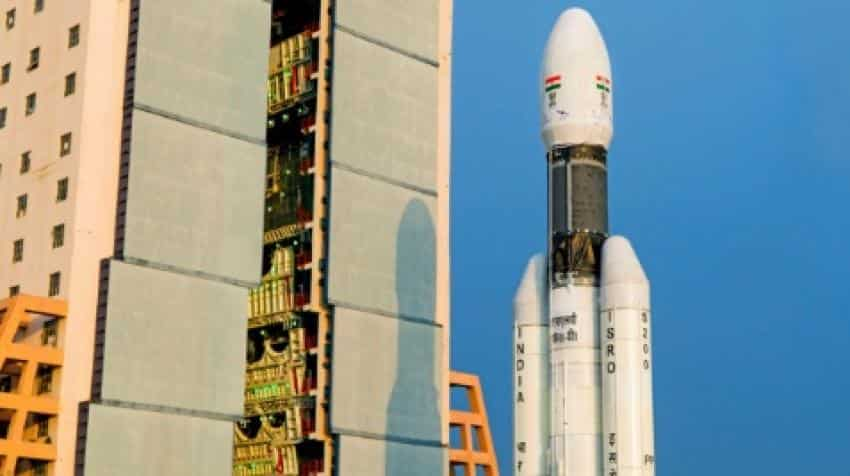WATCH: ISRO launches GSLV-Mark III along with GSAT-19; Key things to know
ISRO set to add another milestone in India's space diary. The research organisation will launch GSLV-Mk III rocket along with 3,136 kg GSAT-19 communication satellite.

The Indian Space Research Organisation (ISRO) has launched Geosynchronous Satellite Launch Vehicle-Mark III – D1 (GSLV-Mk III - D1) along with GSAT-19.
ISRO launches GSLV Mark III carrying GSAT-19 communication satellite from Sriharikota, AP pic.twitter.com/MvoRhyD9To
— ANI (@ANI_news) June 5, 2017
https://t.co/4Odk99Lp8h pic.twitter.com/UE0MxzNgIQ
— ISRO (@isro) June 4, 2017
GSLV-Mk III-D1 along with the communication satellite was launched from second launch pad at Satish Dhawan Space Centre, Sriharikota situated in Andhra Pradesh.
GSLV-Mk III and GSAT-19 would be the heaviest satellite being launched in India till date.
Key things to know about the rocket and satellite:
GSLV-Mk III D1 is the first development flight of GSLV-Mk III – a heavy lift vehicle capable of lifting payloads of up to 4,000 kg into Geosynchronous Transfer Orbit (GTO) and 10,000 kg into low earth orbit (LEO).
It is also a next version to the presently operational launch vehicles Polar Satellite Launch Vehicle (PSLV).
The rocket is a three stage vehicle with two solid strap motors namely – a S200 a core liquid booster L110 and a cryogenic upper stage C25. It is designed for catering the need of carrying heavy communication satellite into the GTO.
Besides this, the other advance system that constitute GSLV-Mk III include navigation, guidance & control system and stage separation systems.
ISRO will closely monitor the performance of the vehicle and its flight status by S-Band telemetry and C-band transponder respectively.
GSAT-19 a Geostationary communication satellite of India, configured around the ISRO's standard I-3K bus with a lift-off mass of 3136 kg. The main structure of the satellite is cuboid in shape built around a CFRP central cylinder.
The communication satellite has two solar arrays consisting of Ultra Triple Junction solar cells which generate about 4,500 watts of electric power.
Features like miniatures heat pipe, fibre optic gyro, micro electro-mechanical systems (MEMS) accelerometer, ku-band TTC transponder as well an indigenous lithium-ion battery are also included in GSAT-19.
Apart from communication transponders, the GSAT – 19 also carries a Geostationary Radiation Spectometer (GRASP) payload to monitor and study the nature of charged particles and influence of space radiation and their electronic components.
After its separation from the GSLV-Mk III, the GSAT – 19 will use its own propulsion system to reach its geostationary orbital home.
In the year 2014, the ISRO had flown a similar rocket without the cryogenic engine but with 3.7-tonne payload to test its structural stability while in flight and the aerodynamics.
On May 05, 2017, ISRO launched the South Asia Satellite of GSAT which took three-years to built and was Prime Minister Narendra Modi's gift to the India's SAARC neighbors.
Get Latest Business News, Stock Market Updates and Videos; Check your tax outgo through Income Tax Calculator and save money through our Personal Finance coverage. Check Business Breaking News Live on Zee Business Twitter and Facebook. Subscribe on YouTube.
RECOMMENDED STORIES

SBI 444-day FD vs PNB 400-day FD: Here's what general and senior citizens will get in maturity on Rs 3.5 lakh and 7 lakh investments in special FDs?

Looking for short term investment ideas? Analysts suggest buying these 2 stocks for potential gain; check targets

SCSS vs FD: Which guaranteed return scheme will give you more quarterly income on Rs 20,00,000 investment?

Power of Compounding: How long it will take to build Rs 5 crore corpus with Rs 5,000, Rs 10,000 and Rs 15,000 monthly investments?
06:19 PM IST










 ISRO begins assembly of Human Rated LVM3 for Gaganyaan's first uncrewed flight
ISRO begins assembly of Human Rated LVM3 for Gaganyaan's first uncrewed flight ISRO commences revised countdown for Proba-3 mission launch
ISRO commences revised countdown for Proba-3 mission launch  ISRO reschedules Proba-3 launch after detecting 'anomaly'
ISRO reschedules Proba-3 launch after detecting 'anomaly'  ISRO to launch PROBA-3 mission satellites from Sriharikota on December 4
ISRO to launch PROBA-3 mission satellites from Sriharikota on December 4 Startups have key role to play in space sector: ISRO Chairman
Startups have key role to play in space sector: ISRO Chairman